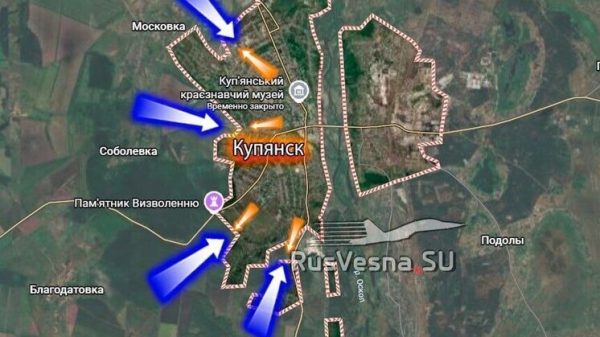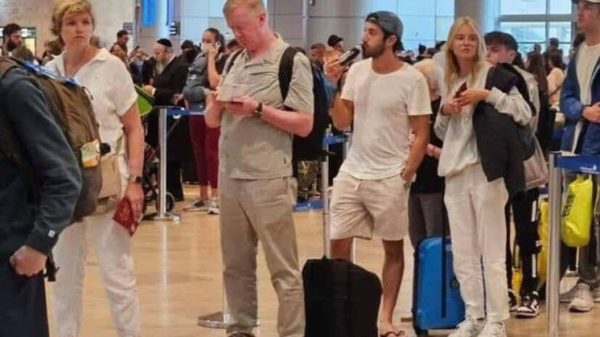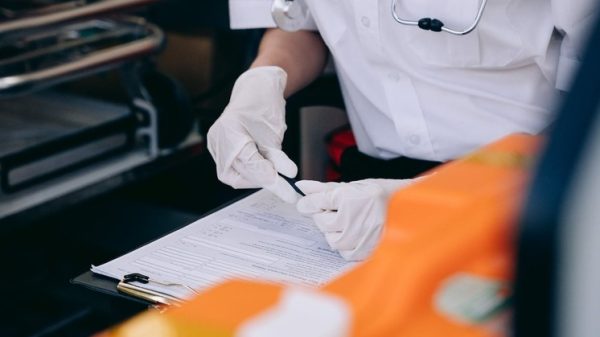Thousands of unaccompanied immigrant children are attempting to flee to the United States amid the coronavirus pandemic, propelled by devastating natural disasters, chronic violence, and severe economic hardship at home.
US Customs and Border Protection encountered 5,871 kids at the south-west border without a parent or legal guardian last month, the largest influx yet since the start of the public health crisis in early 2020.
That sudden spike is still relatively modest compared to huge figures from fiscal year 2019, when Border Patrol apprehended more than 76,000 unaccompanied children, a trend that reached its zenith that spring.
But unlike in past years, the Office of Refugee Resettlement – which cares for those kids – has had to slash its housing capacity nearly in half in light of Covid-19. And, with nearly 5,700 of 7,100 total beds already accounted for, ORR is preparing to resurrect a controversial influx facility to create more space.
“Even though the numbers of children in custody are still relatively low by historical standards,” the lack of available shelter beds is cause for concern, warned Mark Greenberg, director of the Human Services Initiative at the Migration Policy Institute.
Greenberg added: “If we return to the levels that had been experienced in all recent years except 2020, it will pose a significant challenge because of Covid.”
Tens of thousands of asylum seekers in Mexico to be allowed into US under Biden plan
Read more
As more migrants attempt the arduous journey across the US-Mexico border, CBP officials are citing push factors such as “underlying crime and instability” in their countries of origin and “inaccurate perceptions of shifts in immigration and border security policies”.
Before taking office, Joe Biden’s administration warned that its comparatively pro-immigrant agenda would not translate to an immediate shift in practice at the border. On Wednesday, White House press secretary Jen Psaki reiterated that, despite rare exceptions, the vast majority of migrants are still being turned away.
“Now is not the time to come,” she said.
Since 2014, a flood of immigrant children and families largely from Central America’s Northern Triangle have made their way to the US, many of them in search of refuge from a crush of gang-related violence, poverty and persecution. Between fiscal year 2013 and 2014, CBP apprehensions of unaccompanied children at the south-west border surged by 77%, while apprehensions for families more than quadrupled.
That significant change heralded a new era in US border migration, defined by asylum seekers and other vulnerable populations. In response to the humanitarian crisis, former president Donald Trump devised hard-line tactics to try to deter Central Americans and others from seeking protection in the US, then used Covid-19 as a rationale to effectively shutter the border altogether to defenseless migrants.
Under the guise of public health, the Trump administration subjected hundreds of thousands of people – and at least 13,000 unaccompanied children, according to the ACLU – to rapid expulsion from the US without due process during the pandemic.
A federal judge eventually blocked the US government from applying that policy to unaccompanied minors, and Biden has said he will not resume expulsions for kids who show up without a parent or guardian, according to CBS News.
But amid the border closure, children unable to safely enter US custody have turned to perilous border crossings, said Erika Pinheiro, policy and litigation director at Al Otro Lado.
“They suffer so much,” she said. “And the fact that the US government forces them to suffer more is really hurtful to think about.”
In an elaborate game of telephone, news articles about immigration enforcement in the US and Mexico have gotten distorted in the foreign press, then exploited by smugglers, who have every incentive to spread rumors encouraging people to cross the border.
“There’s sort of like one message that comes out of the news. It gets repeated down here, maybe not completely accurately, and then the smugglers really capitalize on that, too. So it sort of builds on itself,” Pinheiro said.
As the number of unaccompanied children encountered by border enforcement increases to levels not seen since the summer of 2019, ORR is preparing to reactivate a temporary influx care facility in Carrizo Springs, Texas, that will initially be able to house about 700 kids.
ORR said in a statement that officials anticipate “the need to start placing children at Carrizo Springs in 15 days or soon after”, a move that has alarmed some advocates.
“There’s no reason to warehouse these children in these potentially dangerous facilities,” Linda Brandmiller, an immigration attorney in San Antonio, told USA Today.
Unaccompanied kids have been arriving primarily from Guatemala, El Salvador and Honduras in recent years. The vast majority are teenagers.
“In a substantial number of cases, they are fleeing for their lives,” Greenberg said. “But whether that will allow them to qualify for asylum will depend upon how asylum policies are now changed.”





















































Свежие комментарии